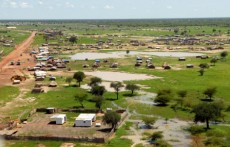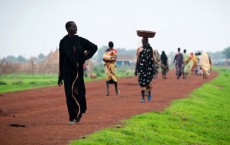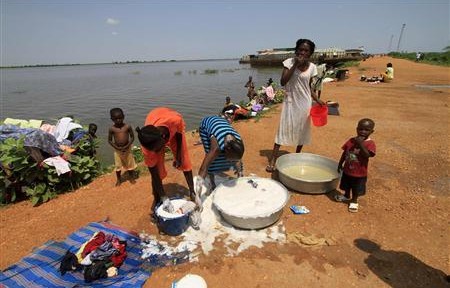South Sudan
On July 9th, 2011, The Republic of South Sudan, after suffering through decades of war, became the world’s 193rd nation. It was and is a day to celebrate. To celebrate the incredible endurance and strength of the South Sudanese people, and their commitment to peace and a better future.
In 1956, Sudan gained independence from it’s colonial overseer, Britain. While this meant that the people of Sudan procured freedom from a foreign power, it did not mean equal governance. The Northern region of Sudan is dominated by a primarily Muslim Arab population, while the South is home to a primarily Black African Christian and Animist population. Before Britain relinquished governance of Sudan, the North was established as the governing body, leaving the Southern people with little to no representation in the new government. This spawned a protest from the South and the subsequent war, lasting nearly two decades. Although this initial civil war eventually came to a brief peaceful interlude, another war broke out only years later, lasting for 21 years. The conclusion of this war finally came with the signing of the 2005 Comprehensive Peace Agreement, which provided for the referendum that saw the South Sudanese vote for independence to eventually become an independent nation.
With war defining most of Sudan national history, virtually all modern development is absent from South Sudan. War not only ravaged the country leaving behind desolation, but prevented any advance. Often the buildings that existed at one point were destroyed during the war or deteriorated with neglect. Jallah, in the Bor region of the Jongoli state is no exception. With 35,000 people, Jalle is extraordinarily flat with only a few buildings dotting the horizon. Primarily a subsistence farming economy, Jalle’s town center contains a number of tin buildings for selling produce and conducting town governance. Nearby the Jalle school operates out of two shipping crates converted into buildings.
Clearly the need is great. Rebuild South Sudan and the community of Jalle are committed to beginning the rebuilding process with education.
Jalle Region
Jalle Payam is one of the five administrative centers in Bor County in the heart of Jonglei state, Southern Sudan. It has a population of approximately 20,000 inhabitants. Due to the civil war between the north and south Sudan, Jalle’s residents were driven out of their homes to seek refuge in the neighboring countries in Ethiopia, Kenya, and Uganda. On January 9, 2005, the government of Sudan and former southern rebel SPLM (Southern People’s Liberation Movement) signed a Comprehensive Peace Agreement (CPA) in Nairobi, Kenya, ending the 21 year civil war.
Many of the people of Jalle are now returning to their ancestral villages. Jalle used to be ruled by the elected chiefs who are trusted by their community members. However, this kind of system is beginning to become extinct as the government is imposing modern rules in which the government appoints people based on loyalties or personal connections. Jalle Payam is currently run by the Civil Administrator in which the chiefs are under his command.
Jalle is located in the Sudd region of Southern Sudan. The Sudd is a vast inland swamp, one of the largest wetlands in the world, formed by the White Nile. Jalle is settled on land that was reclaimed from the Sudd by dikes built to contain the White Nile. During the long civil war, these dikes fell into disrepair and Jalle was subject to seasonal flooding that still plagues the area. The land is flat and very fertile for cattle grazing; however, this same land has many challenges in building a permanent structure. It is reclaimed swampland. A permanent building has yet to be successfully completed in Jalle.









